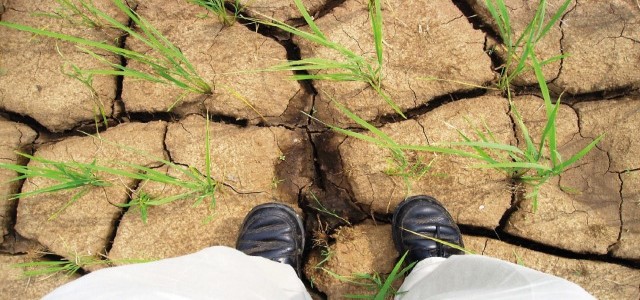Slovakia, a country of mountains, lakes, dense forests, and the fertile lowlands of the Danube River plain, would appear to be one of the last places to be concerned about climate change. Yet in the early 2000s, a series of hotter than normal summers raised an alarm among the country’s farmers and weather monitoring experts. Rain was still falling, but the hot weather was causing the water to evaporate quickly. This left crops dry and reservoirs and groundwater emptier. Drought had come to this normally cool, green country.
And the problem was regional: the whole of the transboundary Danube River basin was affected by the drying conditions. The impact was felt across sectors, from the productivity of vineyards to the movement of shipping barges and tourists’ river cruises.
Changing thinking
In 2013, working with the World Meteorological Organization (WMO), GWP Central and Eastern Europe leveraged WACDEP funding to establish the Integrated Drought Management Programme in Central and Eastern Europe (IDMP CEE). Its aim was to shift the focus of governments from reactive to proactive drought management. This meant convincing management agencies to move from clearing up the one-off results of forest fires and compensating farmers for a season of lost crops, to learning how to know when – not if – drought was coming, and thinking about how to prepare for and reduce its effects.
New tools
Understanding that drought occurs in stages that sometimes go unnoticed, the IDMP CEE decided that early warning systems were needed. Additional funding from the EU Interreg Danube Programme and DriDanube project made it possible to set up a platform to collect and share broadly the region’s weather, soil, crop, and forestry data in a public online space. IDMP CEE began recruiting a network of observer–reporters among the farmers, fruit growers, vineyard keepers, and foresters of the region.
Called Drought Watch, the system makes use of a set of earth observation data from a range of operational remote sensing satellites, data from meteorological stations, and drought impact reports to generate interactive maps of current conditions, providing up-to-date information that helps users of land and water to plan ahead.
Providing reliable information is only part of the solution to dealing with climate change. Governments also need to have informed policy in place to ensure a strong support system for managing risk. Drought management plans and policies help to organise the work of institutions and existing legislation to allow cooperation and reaction during the different stages of drought.
Setting an example
Slovakia, an active partner in this programme, was selected by the IDMP CEE to provide a case study on developing drought risk management guidelines that could be used by the entire region, as all countries would create their own risk management plans. In 2014, GWP Central and Eastern Europe produced a report on the case study that provided detailed analysis of conditions in Slovakia and suggested drought indicators and management structures. A step-by-step approach to applying drought management guidelines was a result of this process. Convincing in the level of detail provided and in the relevance of its recommendations, the report – and the resulting guidelines – were taken up by Slovakia’s government. In partnership with the IDMP CEE, in 2017, an inter-ministerial working group that included stakeholders from relevant sectors was tasked to prepare the region’s first country-level Drought Action Plan.
The plan’s designers looked closely at the preventive, operational, and crisis measures needed. Among these measures were identifying drought-resistant tree species, surveying groundwater, designing new irrigation canals, expanding the monitoring network, and developing triage processes for disaster conditions. Having a cross-section of stakeholders engaged in developing the plan meant that the finished product was well understood by those who would be using it.
Norbert Kurilla, Slovak State Secretary and Deputy Minister for Environment and Climate Change, reported: “Drought is a phenomenon which we are battling more and more often. We are very happy to have developed the Slovak Drought Action Plan, in the frame of which we plan to invest €140 million into the approved measures.”
In 2018, the action plan was launched to regional acclaim. Focused on anticipation, prevention, and action, the plan has the potential to lead the way in mitigating the effects of Europe’s new climate.

